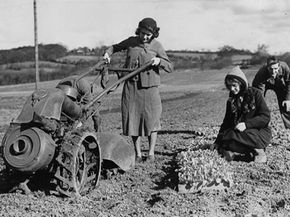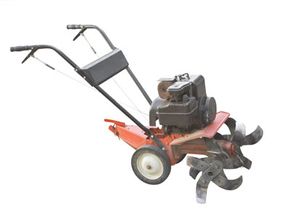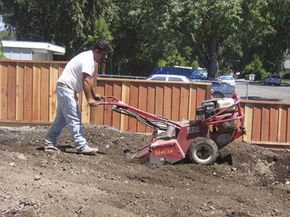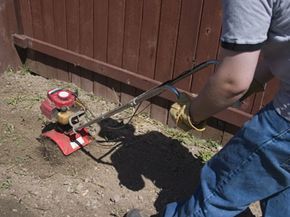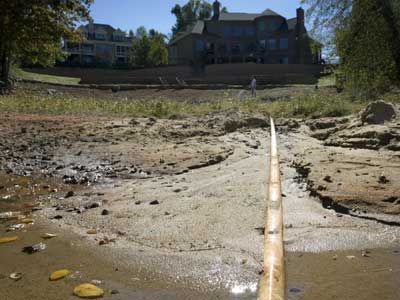Nothing beats the feeling of accomplishment a homeowner gets from enjoying their own magazine-worthy lawn and garden. Whether it's a small vegetable patch, a formal rose garden, some raised beds and planters or a simple green Bermuda grass lawn, to get to the pleasurable part takes some serious pain. Tilling is a means of cultivating soil, or getting it ready for planting, and it's the most labor-intensive part of any gardening project. Tilling is necessary because soil often is compacted, weedy or rocky. None of these conditions are very conducive to growing grass, plants, flowers or vegetables. So to get the soil ready for planting, you have to till it, often working in soil amendments, like compost or fertilizer, as you go. The least painful way to do this is with a lawn tiller, or rotary tiller.
Who invented the roto-tiller is a matter of debate. Some people place its roots in Switzerland, with Dr. Konrad von Meyenburg. He applied for a patent for a "Machine for Mechanical Tillage" in 1910, which was granted two years later. Others give credit to an Australian farmer named Arthur Clifford Howard, who began experimenting with a tilling machine powered by a steam tractor in 1912. Popular lawn and garden tool manufacturer Troy-Bilt sets 1937 as the year the first tillers began to plow up U.S. soil with their own Model A-1 tiller. This model had a four-and-a-quarter horsepower engine and was designed by C.W. Kelsey. It used cleated steel wheels to do the digging and weighed in at a robust 400 pounds (181 kilograms).
Advertisement
Since then, roto-tillers have gotten smaller and more manageable. But don't be fooled by television ads that show a well-dressed housewife on a leisurely stroll with her tiller. Despite 40-plus years of tweaking the design to make a tough process easier, tilling a yard or garden is still hard work, even with a top-of-the-line tiller. If you're cultivating compacted soil, the realistic version of the TV commercial would look more like a man-versus-machine cage match than a walk in the park.
What kind of tiller you should buy is based on a few factors. And you can always choose to rent one if you have a one-time project planned. We'll get into these factors and look at the basics of what helps a lawn tiller do its thing on the following pages.
